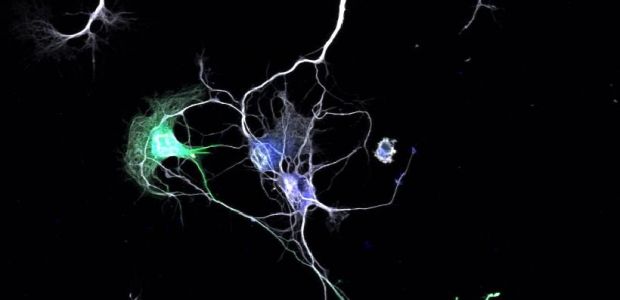University of Arizona, Tucson doctoral student Sara Parker, alongside her adviser Sourav Ghosh (assistant professor of cellular and molecular medicine), have shed light on an unknown mechanism responsible for establishing polarity in developing nerve cells. This research, receiving life science funding from the National Institute of Health and Achievement Rewards for College Scientists Foundation, Inc. (awarded to Sara Parker), is allowing these scientists to understand how nerve cells make connections in the body.
Nerve cells, also known as neurons, contain an axon, or nerve fibre (a long, slender projection of the nerve cell used to transmit information between neurons), and dendrites (“branch-like” structures stemming from the nucleus of the neuron). When the “branches” of the dendrites connect with axons from other neurons, nerve cells combine to form complex communication networks responsible for simple, everyday reflexes as well as complicated networking systems in the brain.

From a recent publication in the journal Proceedings of the National Academy of Sciences on Aug. 12, Parker (pictured left, courtesy of Beatriz Verdugo/UANews) and Ghosh revealed important findings regarding these tree-like nerve cells. Newborn nerve cells contain a long and short version of the same signalling cell, which ultimately makes the decision which end of the neuron will be the “plus” side and which the “negative” side. This unknown mechanism establishes the polarity in these developing nerve cells.
According to Sourav Ghosh, "We show that wiring a neuronal circuit is much more complex than previously thought. The process has a built-in robustness that explicitly defines which part of the cell is ‘positive’ and which is 'negative. If we understand this mechanism, we could think about methods to spur new axons after the original ones were severed in a traumatic spinal cord injury, for example.”

(Nerve cells combining to form neural networks, courtesy of Sarah Parker)
Understanding how these connections are made can not only reveal information for spinal cord injuries, but could also aid in the development of cures for neurodegenerative diseases such as Alzheimer's.
If you are a lab supplier interested in working to sell lab products to researchers, purchasing agents and lab managers with available life science research funding within departments such as those featured in this article (cellular and molecular medicine, pharmacology and physiology) and many more, Biotechnology Calendar Inc. invites you to attend the 11th annual Tucson BioResearch Product Faire™ FrontLine Event on campus at UA on November 6th, 2014.
Biotechnology Calendar, Inc. is a full-service science research marketing events-planning company that organizes life science marketing events at top research universities across the country. If you’re interested in marketing your lab products at life science marketing events closer to home, we encourage you to view our 2014 calendar of events. For more information on the Tucson BioResearch Product Faire™ Event, or for more detailed life science research funding statistics at the University of Arizona, Tucson, click on the button below.

